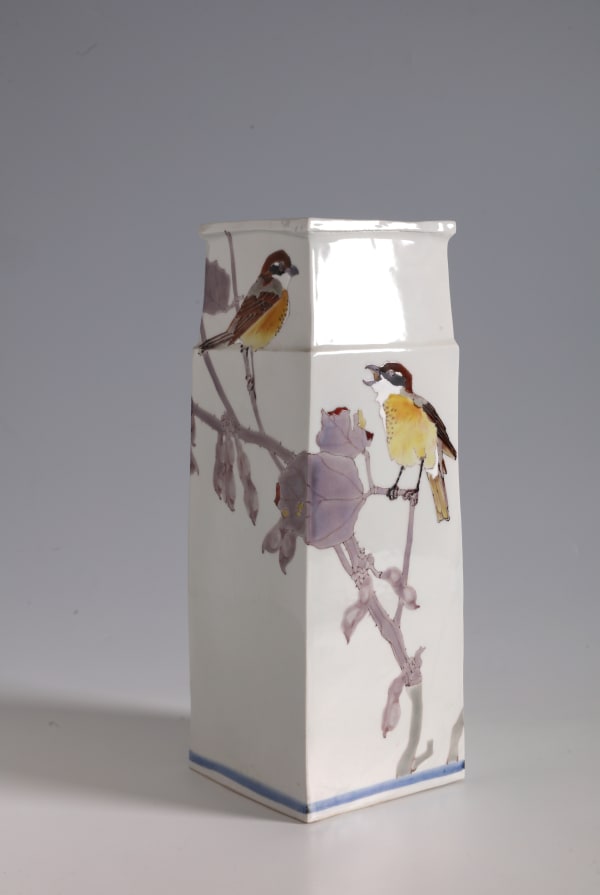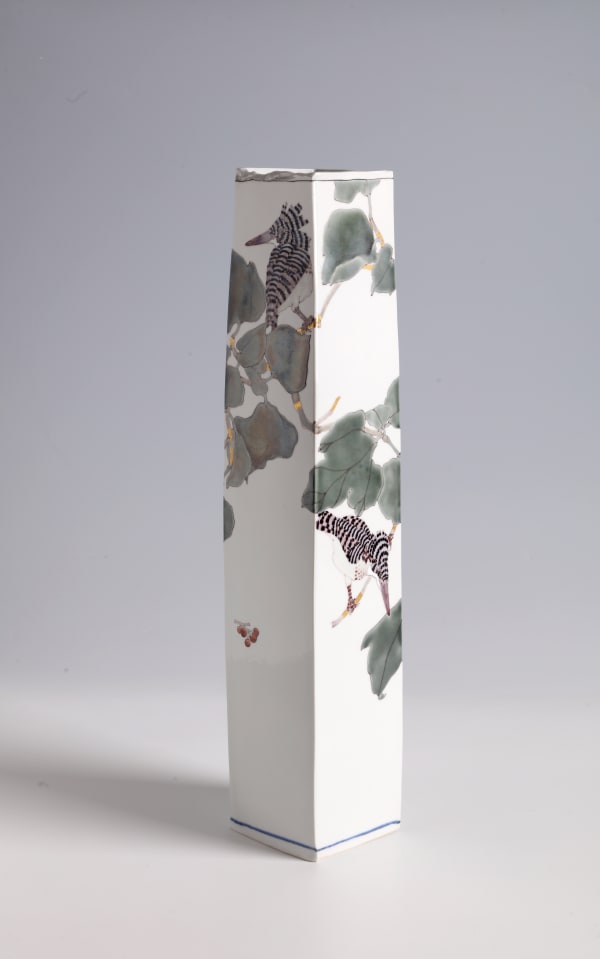Japanese Ceramics: Medieval to Contemporary
Current viewing_room

Thomsen Gallery is delighted to invite you to our spring exhibition Japanese Ceramics: Medieval to Contemporary.
This special show—devoted to a key component of the Japanese aesthetic tradition that is as dynamic today as it was 10,000 years ago—starts with a small group of stoneware vessels dating from the sixth to the eighteenth century, all of them fired for several days at very high temperatures without deliberate glazing. Their dynamic surface finish derives from accumulations of wood ash circulating in the kiln’s atmosphere; as the ash settled, its silica content melted and fused to create patches and streaks of color that complement the vessels’ robust forms and rugged surfaces.
Originally made for utilitarian purposes, over time these early ceramics came to be appreciated for their aesthetic qualities, especially by the pioneers of chanoyu, the Japanese Tea Ceremony. Thanks to their leadership, many of Japan’s medieval kiln centers are still active today and the country’s ancient ceramics remain an important source of inspiration. Our selection of postwar ceramics includes wares from two of them: Hagi and Bizen. Yamato Yasuo’s Hagi-ware flask is a contemporary reinterpretation of traditional stoneware with a strong sculptural profile, while Tsujimura Shirō’s tea bowl—the most important of the chanoyu utensils—is more faithful to earlier Bizen-ware models, with a classically formed red-brown body crafted from unrefined clay and marked by dramatic inclusions of feldspar.
Ceramic artists in the Mingei tradition (founded in the 1920s) played a key role in shaping the American taste for contemporary Japanese ceramics during the early postwar period. We are proud to present a work by the most famous of them, Hamada Shōji, a jaunty vase with his favorite cross motifs executed in poured glaze. In complete contrast to Hamada’s easy-going abstract style, a formal flower container by Shinkai Kanzan exemplifies the refinement of ceramics made in Kyoto, Japan’s ancient capital, with its high-relief, meticulous naturalistic molding of a sponge gourd and its dried interior.
Contemporary Japanese porcelain forms an important component of our spring show. We present mature masterpieces by two Living National Treasures, Nakajima Hiroshi and Tokuda Yasokichi III. Nakajima was admired for the beauty of his celadon glazes while Tokuda was celebrated for his skillful repurposing of his family’s traditional style, abandoning pictorial motifs but using the same glaze colors to create gradated abstract patterning applied to perfectly wheel-thrown vessels. Takegoshi Jun, like Tokuda a scion of the Kutani tradition of porcelain decoration, paints lively, closely observed bird-and-flower designs on slab-built forms.
Finally, we are delighted to offer another group of outstanding works—including both vessels and pure sculptures—by Fukami Sueharu. Thomsen Gallery has maintained a close connection with Fukami for more than three decades and today he is more widely honored than ever both in his own country and across the seas. His wheel-thrown or pressure-cast porcelain sculptures, finished in a luminous bluish-white glaze that originated in eleventh-century China, are admired in public collections around the world.



























This website uses cookies
This site uses cookies to help make it more useful to you. Please contact us to find out more about our Cookie Policy.